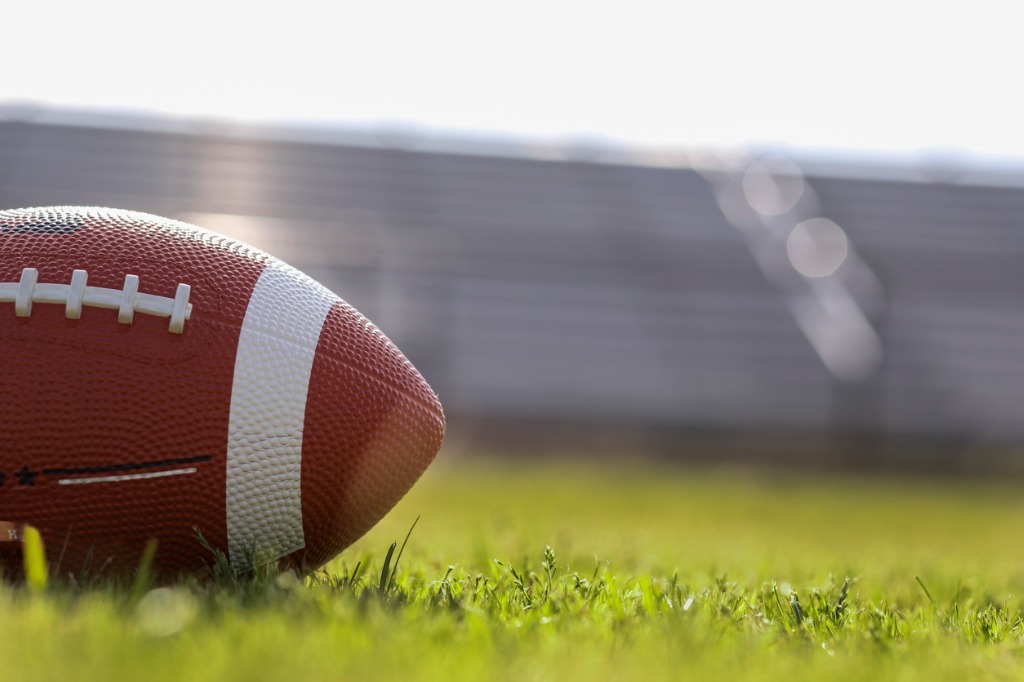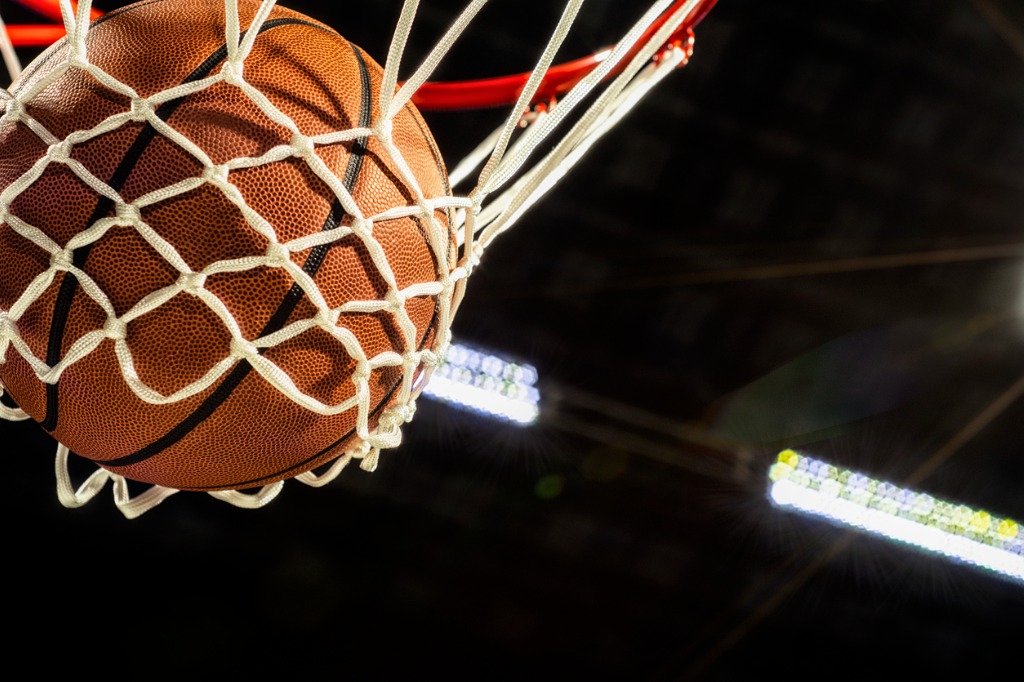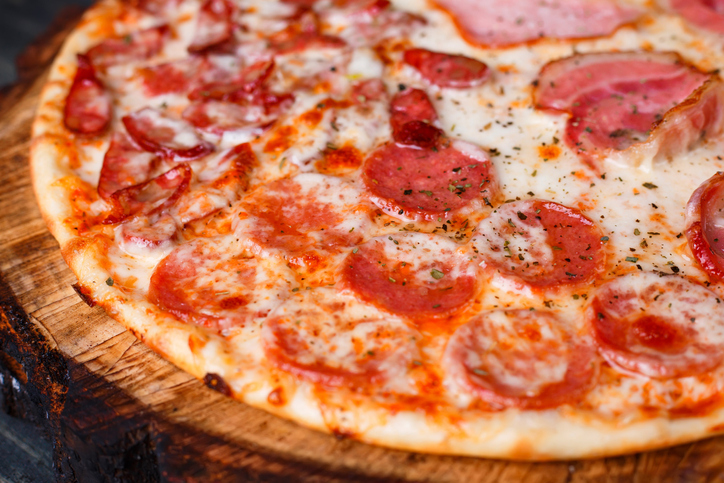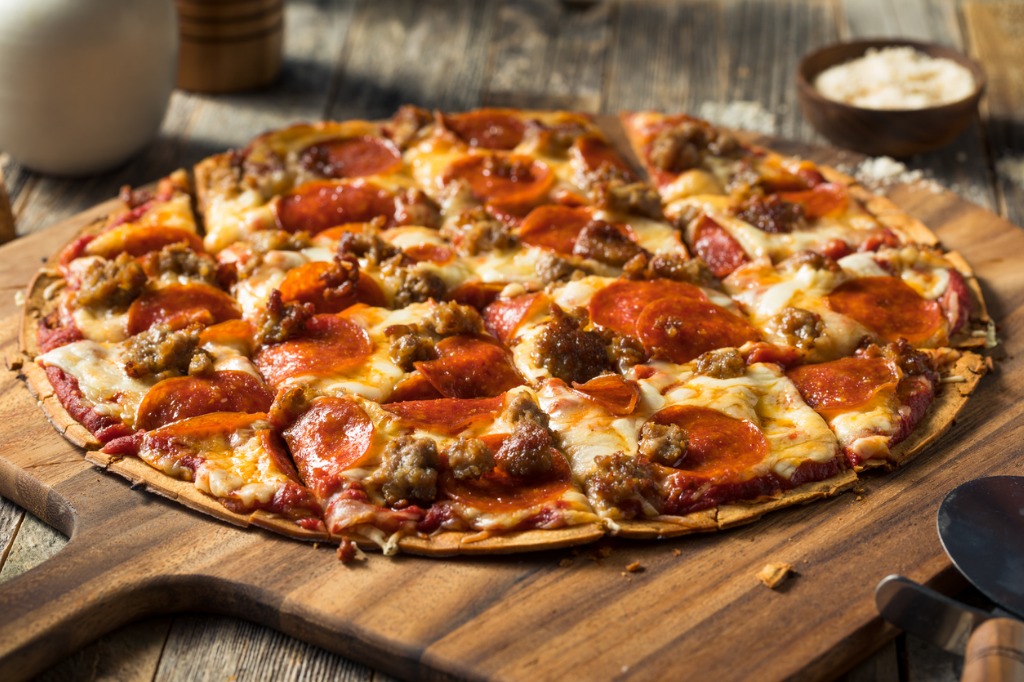History of St. Louis Sports Teams

St. Louis is known for many things: the Gateway Arch, St. Louis-style pizza, Anheuser-Busch, and, of course, professional sports! St. Louis has a rich history of professional sports. Whether you’re discussing hockey, football, baseball, basketball, or soccer, St. Louis has likely had at least one professional team, and some of those teams achieved considerable success in their respective sports.
St. Louis Baseball
Why not start with baseball? After all, the St. Louis Cardinals have won the second-most World Series Championships (11) and the fourth-best overall win-loss percentage (.52) in Major League Baseball (MLB) history. The St. Louis Cardinals have a long and confusing history, so strap in, ladies and gents, because a hefty information dump is about to occur.
St. Louis professional baseball began with the inception of the St. Louis Brown Stockings in 1875 as part of the National Association of Professional Base Ball Players (NAPBBP). N-A-P-double-B-P is quite the mouthful, so people often referred to the NAPBBP as simply the National Association or NA for short.
However, the Brown Stockings’s tenure with the NA was short-lived. The NA folded that very same year due to a lack of strong authority over the numerous clubs, meager entry fees, unsupervised scheduling, and the dominance of the Boston Red Stockings.
In response to the folding of the NA, the Brown Stockings, along with several other professional baseball clubs (the Chicago White Stockings, the Philadelphia Athletics, the Boston Red Stockings, the Hartford Dark Blues, the New York Mutuals, the Cincinnati Reds, and the Louisville Grays), formed the National League of Professional Baseball Clubs, or National League (NL) for short, in 1876.
The Brown Stockings finished with the third-best record in the NL in the league’s inaugural season, while the Chicago White Stockings finished with the best record, making the latter team the default champion for that season, as the league had no playoffs.
 However, the Brown Stockings and White Stockings had an intense rivalry, so the two teams played an unofficial five-game series to crown the “Champions of the West.” The Brown Stockings won that unofficial championship series. We’d like to give our condolences to whichever team finished second-place that season. Apparently, nobody cared.
However, the Brown Stockings and White Stockings had an intense rivalry, so the two teams played an unofficial five-game series to crown the “Champions of the West.” The Brown Stockings won that unofficial championship series. We’d like to give our condolences to whichever team finished second-place that season. Apparently, nobody cared.
The following season saw the St. Louis Brown Stockings and the Louisville Grays embroiled in a game-fixing scandal that led both teams to declare bankruptcy. For the next few years, the Brown Stockings continued to play as an independent barnstorming team (a team that travels to different locations to stage exhibition matches).
In 1881, entrepreneur Chris von der Ahe purchased the Brown Stockings and made them a founding member of the American Association (AA), a competitor of the NL. Von der Ahe shorted the team’s name to the St. Louis Browns, and the Browns went on to achieve significant success in the AA from 1882 to 1891.
We should note that the AA’s 1882 inaugural season is considered the first season in the St. Louis Cardinals’s history, as the Browns were renamed to the Cardinals in 1900. The Browns’s existence from 1875-1881 is not considered a part of the Cardinals’s official history due to the number of reorganizations that occurred during that period.
The AA began to lose ground to the NL in the late 1880s, thanks to several AA teams defecting to the NL. In 1892, the AA officially declared bankruptcy, and the St. Louis Browns (soon-to-be Cardinals) rejoined the NL, the baseball league they helped form back in 1876.
So, at what point did the St. Louis Browns (sometimes referred to as the St. Louis Perfectos at the time) become the St. Louis Cardinals we know and love today?
Well, the Browns’s uniforms featured cardinal-red trim and sock striping, and during the 1899 season, St. Louis Republic writer Willie McHale published a column containing a remark made by a female fan who stated that the uniforms were a lovely shade of cardinal. Fans took to the nickname “Cardinals,” so the team officially changed its name in 1900.
In 1902, the newly established Milwaukee Brewers moved to St. Louis and changed their name to the St. Louis Browns, sparking a fierce rivalry that would continue for the next fifty years.
The Cardinals’s first 28 seasons in the NL are not representative of the success the franchise would later achieve. Over that 28-year stretch, the team had a forgettable win-loss percentage of .406, racking up 1,632 wins, 2,425 losses, and 74 ties. However, under Sam Breadon’s ownership, St. Louis turned their misfortunes around, winning the World Series in 1928, 1930, and 1931.
The immensely successful 1934 St. Louis Cardinals, who received the nickname “Gas House Gang,” won 95 games, the NL pennant, and the World Series under the leadership of that season’s Most Valuable Player (MVP), Dizzy Dean. This season sparked the term “Cardinal Nation” due to the Cardinals’s dizzying popularity beyond the St. Louis area.
The Cardinals’s success continued into the 1940s, one of the most prosperous decades in franchise history. They accrued 960 wins and 580 losses for a winning percentage higher than any other Major League team during that stretch. The Cardinals won the World Series in 1942, 1944, and 1946.
In 1953, the Anheuser-Busch brewery bought the Cardinals, and August “Gussie” Busch became the team’s president. Coincidentally, the Browns left for Maryland the same year and became the Baltimore Orioles, leaving the Cardinals as the only professional baseball club in St. Louis. The Cardinals went on to win five more World Series Championships in 1964, 1967, 1982, 2006, and 2011.
St. Louis Hockey
While the St. Louis Blues have not experienced the same explosive success in the National Hockey League (NHL) as the St. Louis Cardinals have in Major League Baseball (MLB), the Blues have undoubtedly proven themselves to be one of the most consistent franchises in NHL history. The Blues have qualified for the playoffs in all but nine of their 52 seasons and appeared in the Stanley Cup Finals four times, finally winning the whole enchilada in 2019.
The Blues were one of the six expansion teams (alongside the Los Angeles Kings, Minnesota North Stars, Oakland Seals, Philadelphia Flyers, and Pittsburgh Penguins) added to the NHL in the monumental 1967 expansion, which doubled the league’s size from six teams to twelve.
 The NHL originally planned to establish the St. Louis Blues in Baltimore. However, the owners of the Chicago Blackhawks (Black Hawks at the time), James D. Norris and Arthur Wirtz, tried to convince the league to establish the team in St. Louis instead, as the two men owned the then-dilapidated St. Louis Arena. Because of St. Louis’s location and the fact that it already had an unused arena, the NHL agreed.
The NHL originally planned to establish the St. Louis Blues in Baltimore. However, the owners of the Chicago Blackhawks (Black Hawks at the time), James D. Norris and Arthur Wirtz, tried to convince the league to establish the team in St. Louis instead, as the two men owned the then-dilapidated St. Louis Arena. Because of St. Louis’s location and the fact that it already had an unused arena, the NHL agreed.
The St. Louis Blues’s first owners were Sid Salomon Jr., his son, Sid Salomon III, and Robert L. Wolfson. After acquiring the franchise in 1966, Salomon spent several million dollars renovating the 38-year-old St. Louis Arena, added 3,000 seats, and renamed it the Checkerdome. The Blues achieved immediate success in the NHL, reaching the Stanley Cup Finals in each of their first three seasons. Unfortunately, they were defeated by the Montreal Canadiens in 1968 and 1969 and the Boston Bruins in 1970.
The Salomons began to experience financial difficulties during the 1970s, and the St. Louis Blues were on the brink of collapsing, so the Salomons sold the franchise to Ralston Purina in 1977. After a few terrible seasons—the 1979 season is still the worst season in franchise history—the St. Louis Blues finished with a then-franchise-best 45-18-17 regular-season record in 1981. This record translated to 107 points, making the Blues the second-best team in the league that season.
Although the St. Louis Blues achieved considerable success on the ice, off the ice was a completely different story. Ralston was locked in some significant legal battles with the NHL, and in 1983, businessman Harry Ornest and a group of St. Louis-based investors took over the team and the Checkerdome, reverting its name to the St. Louis Arena. Ornest ran the Blues on a tight budget, and the franchise remained competitive for the three years he owned the team.
Throughout the rest of the 80s and 90s, General Manager Ron Caron made several intelligent player acquisitions, landing talented forwards Brett Hull, Adam Oates, and Brendan Shanahan, defenseman Al MacInnis, and goaltender Curtis Joseph. Brett Hull’s 86 goals in the 1991 season set the record for the most goals in a single season by a right-winger.
Unfortunately, while the Blues were great contenders during this period, they never advanced past the second round of the playoffs. Despite having the second-best regular-season record in the ‘91 season, the Blues lost in the second round of the playoffs to the Minnesota North Stars, a defeat symbolic of St. Louis’s playoff struggles during that timeframe.
In 2000, the team achieved a still-franchise-best record 114 points during the regular season, earning the Presidents’ Trophy for having the best record in the league. However, the San Jose Sharks upset the Blues in the first round of the 2000 playoffs, adding to the legacy of the franchise’s playoff struggles. The team remained competitive for the next three years but never advanced beyond the second round of the playoffs.
Due to several changes and unstable ownership, the Blues finished the ‘06 season with their worst record in 27 years. Following that dreadful season, the new management focused on rebuilding the franchise. The Blues finally reappeared in the 2009 playoffs, ending a five-year playoff drought. Unfortunately, the Vancouver Canucks swept them in the first round.
Wow, I’ve been writing the word “unfortunately” a lot. Unfortunately, the St. Louis Blues have had a rather unfortunate time in the playoffs, despite consistent regular-season success.
FORTUNATELY (finally, right?), in 2019, the St. Louis Blues advanced to the Stanley Cup Finals for the first time since 1970 and defeated the Boston Bruins in seven games, winning the first Stanley Cup in franchise history. Much celebration was had in St. Louis that day. Let’s hope that this championship is a sign of more playoff success to come!
St. Louis Football
The history of St. Louis football is not quite as involved as the city’s baseball and hockey history, but there is still plenty to discuss, so don’t you worry. Believe it or not, four different National Football League (NFL) franchises have called St. Louis home.
In 1923, three years after the NFL’s inception, St. Louis accepted the All-Stars as a franchise for a single season. The St. Louis All-Stars, to put it bluntly, sucked. They won a single game in their inaugural season and folded after the conclusion of that very same season. Okay.
After the St. Louis All-Stars came the St. Louis Gunners. The Gunners were an independent football team that played the last three games of the 1934 NFL season as a replacement for the Cincinnati Reds, which had its league membership suspended… and that was that! Neither the Cincinnati Reds nor the St. Louis Gunners continued to play in the NFL after the conclusion of the 1934 season.
Goodness gracious, the early days of St. Louis professional football were far from glamorous.
 St. Louis’s third NFL franchise, interestingly enough, was the St. Louis Cardinals, who relocated to St. Louis from Chicago in 1960. Yes, from 1960 to 1987, there were two major league sports teams called the Cardinals in St. Louis, and both teams played their homes games at Busch Memorial Stadium.
St. Louis’s third NFL franchise, interestingly enough, was the St. Louis Cardinals, who relocated to St. Louis from Chicago in 1960. Yes, from 1960 to 1987, there were two major league sports teams called the Cardinals in St. Louis, and both teams played their homes games at Busch Memorial Stadium.
However, the NFL’s St. Louis Cardinals were not nearly as successful as the MLB’s St. Louis Cardinals. During their 28-year tenure in St. Louis, the Cardinals made the playoffs only three times and never won a single playoff game. Due to the team’s lack of success and dwindling interest, ownership relocated the team to Phoenix, Arizona, renaming it the Phoenix Cardinals. Nowadays, we know the team as the Arizona Cardinals.
If you’ve ever wondered if the Arizona Cardinals had any relation to the St. Louis Cardinals, now you know. The answer is yes.
The fourth and final St. Louis NFL franchise is the one that people are probably most familiar with: the St. Louis Rams. The Rams first began life in 1936 in Cleveland, Ohio, as the Cleveland Rams before relocating to Los Angeles in 1946. In 1995, the team relocated to St. Louis, where it stayed until 2015.
The Rams appeared in two Super Bowls while based in St. Louis, defeating the Tennessee Titans to win Super Bowl XXXIV in 1999 and losing to the New England Patriots in Super Bowl XXXVI in 2001. In 2016, the St. Louis Rams moved back to Los Angeles, where they currently remain… for the time being. This team won’t stop until they’ve played all over the United States.
In 2018, the recently resurrected XFL established the St. Louis BattleHawks. To be honest, not much has happened since.
St. Louis Basketball
We would wager that only the staunchest of basketball nerds know anything about St. Louis professional basketball, so don’t feel bad if you weren’t even aware that four professional basketball franchises called St. Louis home (and one still does!).
St. Louis previously hosted two National Basketball Association (NBA) teams, the first of which was the St. Louis Bombers. The St. Louis Bombers was one of the original franchises established in the inaugural season of the Basketball Association of America (BAA). In 1949, the BAA merged with its competitor, the National Basketball League (NBL), creating the NBA we know and love today. Unfortunately for the Bombers, the franchise dissolved immediately after the merger.
 However, this would not spell the end for basketball in St. Louis, as the Milwaukee Hawks relocated to St. Louis in 1955. Led by superstar forward Bob Pettit, the St. Louis Hawk would achieve incredible success in the late 1950s and early 1960s. Bob Pettit won the NBA’s very first annual Most Valuable Player (MVP) award in 1956 and won the award again in 1959.
However, this would not spell the end for basketball in St. Louis, as the Milwaukee Hawks relocated to St. Louis in 1955. Led by superstar forward Bob Pettit, the St. Louis Hawk would achieve incredible success in the late 1950s and early 1960s. Bob Pettit won the NBA’s very first annual Most Valuable Player (MVP) award in 1956 and won the award again in 1959.
The St. Louis Hawks reached the NBA Finals on four occasions, losing to the Boston Celtics in 1957, 1961, and 1962 and defeating the Boston Celtics in 1958. This Finals win in 1958 is a noteworthy accomplishment for the St. Louis Hawks, as they were the only team to ever defeat the Bill Russell-led Celtics in the NBA Finals. These Celtics teams advanced to the NBA Finals twelve times from 1957 to 1969, going 11-1 in the process.
In 1968, the St. Louis Hawks relocated to Atlanta, Georgia, where they continue to play today. Another professional basketball team, the Spirits of St. Louis, played in the American Basketball Association (ABA), a competitor of the NBA, from 1974 to 1976. The NBA dissolved the franchise after the ABA-NBA merger in 1976.
The St. Louis Surge, a women’s professional basketball team, was founded in 2011. The franchise has won two national championships and five regional championships since its inception. It should be noted that this team is not part of the Women’s National Basketball Association (WNBA).
St. Louis Soccer
Last but not least, we have association football, more commonly known as soccer here in the United States. In 2019, Major League Soccer (MLS) announced that it approved St. Louis to be the location of a new franchise. The St. Louis City SC is expected to begin playing in 2023 at a planned soccer-specific stadium near St. Louis’s Union Station.
 While this is exciting news for St. Louis soccer fans, the St. Louis City SC will not be the first professional soccer team to play in STL. The Major Indoor Soccer League (MISL) gave St. Louis a franchise in 1979 called the St. Louis Steamers. The home opener took place in December of 1979 and drew more than 18,000 fans to the game. Much of the team’s draw was due to its roster consisting of largely local talent.
While this is exciting news for St. Louis soccer fans, the St. Louis City SC will not be the first professional soccer team to play in STL. The Major Indoor Soccer League (MISL) gave St. Louis a franchise in 1979 called the St. Louis Steamers. The home opener took place in December of 1979 and drew more than 18,000 fans to the game. Much of the team’s draw was due to its roster consisting of largely local talent.
The 1982 season was the Steamers’s most successful. The team averaged 17,107 fans per game, won their second straight division title, and reached the MISL Championship. Unfortunately, the Steamers lost to New York. The Steamers continued to play until the franchise folded in 1988.
In 1998, another indoor team emerged that also called themselves the St. Louis Steamers. This team played in the World Indoor Soccer League (WISL) from 2000 to 2001 and then in the MISL from 2003 to 2006. The team suspended operations after the 2006 season.
Many residents of the St. Louis area follow soccer closely. Here are some rapid-fire St. Louis soccer facts!
- St. Louis has contributed at least one player to each FIFA World Cup.
- The Saint Louis University men’s soccer team has snagged ten national championships, appeared in sixteen NCAA Final Fours, and consistently ranks among the top ten Division I soccer teams in fan attendance.
- In 2013, Chelsea and Manchester City played in front of a crowd of more than 48,000 people in Busch Stadium. Later that year, the Edward Jones Dome hosted a huge exhibition game between Real Madrid and Inter Milan in front of 54,184 fans, setting a city record for attendance for a soccer match.
- Twenty-nine inductees into the National Soccer Hall of Fame have called St. Louis home at one point or another.
Whether you’re a fan of baseball, hockey, football, basketball, soccer, or all five, St. Louis has had a lot to offer over the years, even if our home currently doesn’t host an NBA, MLS, or NFL franchise. The only thing we can do is hope for the future!
In the meantime, next time you sit down for a game or host a watch party, don’t forget to bring out the Dogtown Pizza! We are huge St. Louis sports fans, and we can attest that nothing goes better with the big game than a cold one and a slice of St. Louis-style pizza!





This Post Has 0 Comments